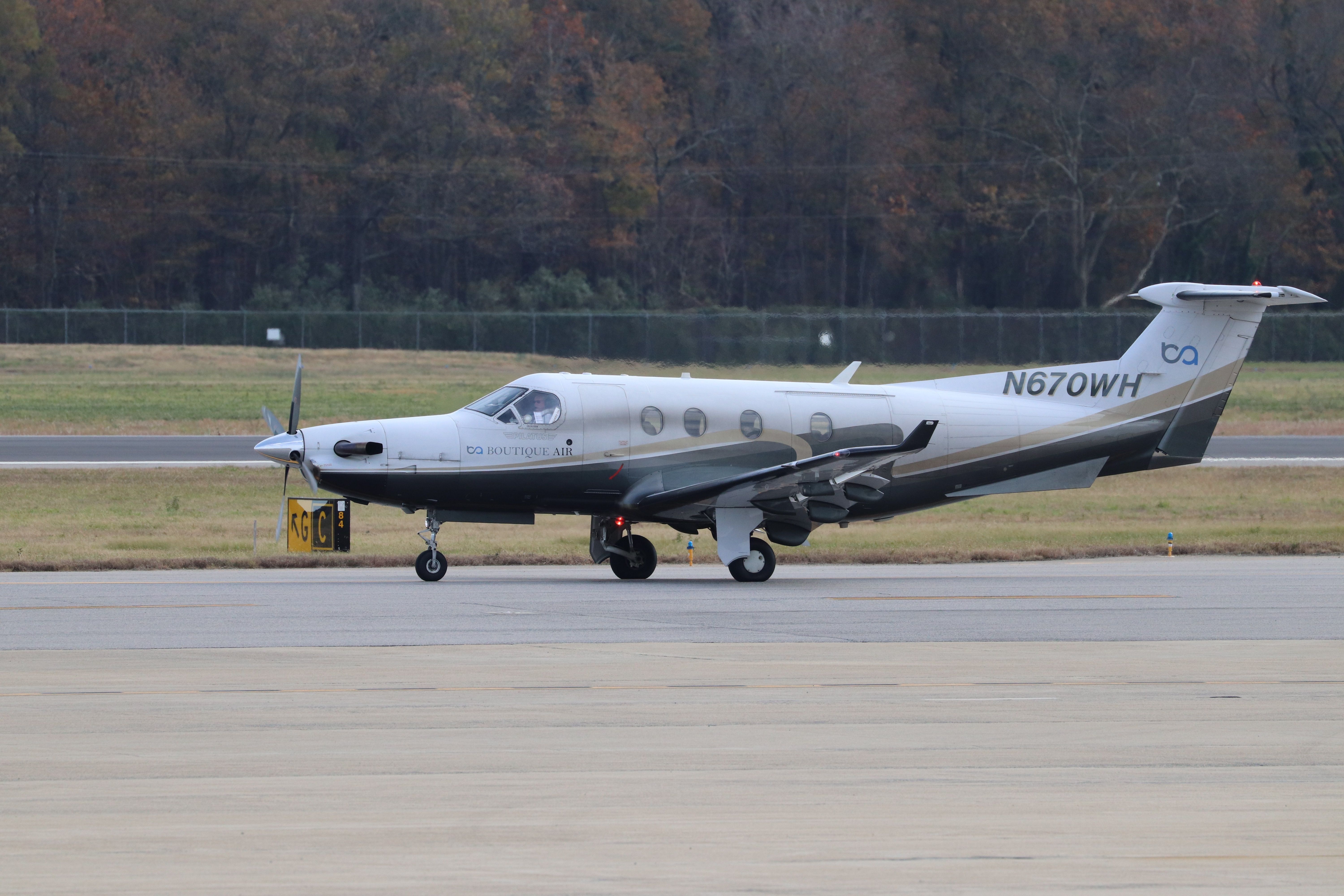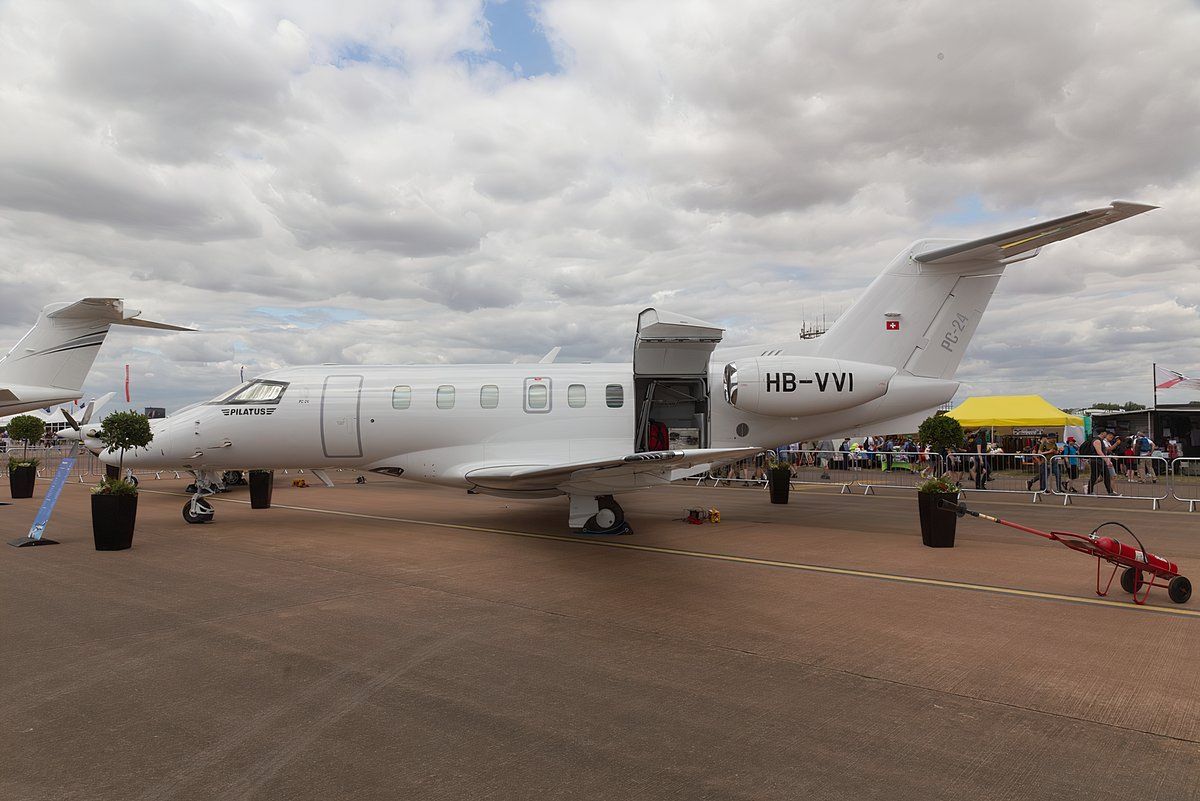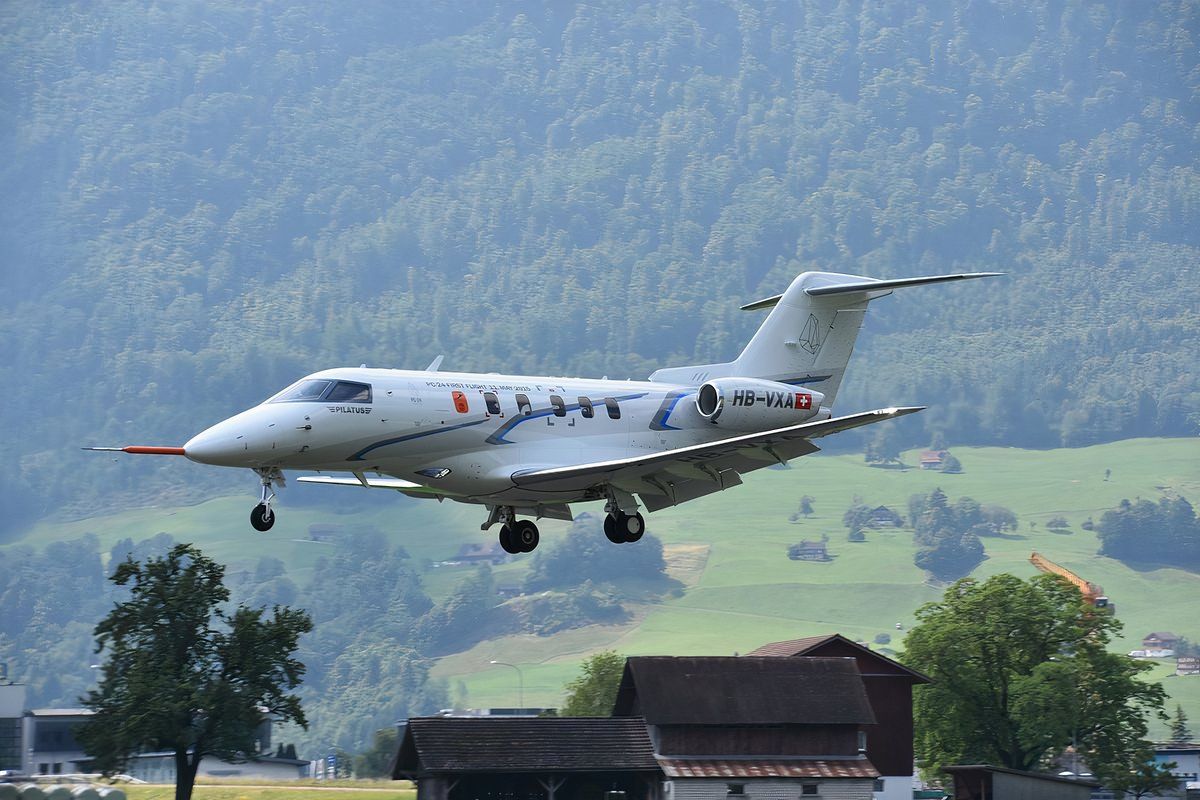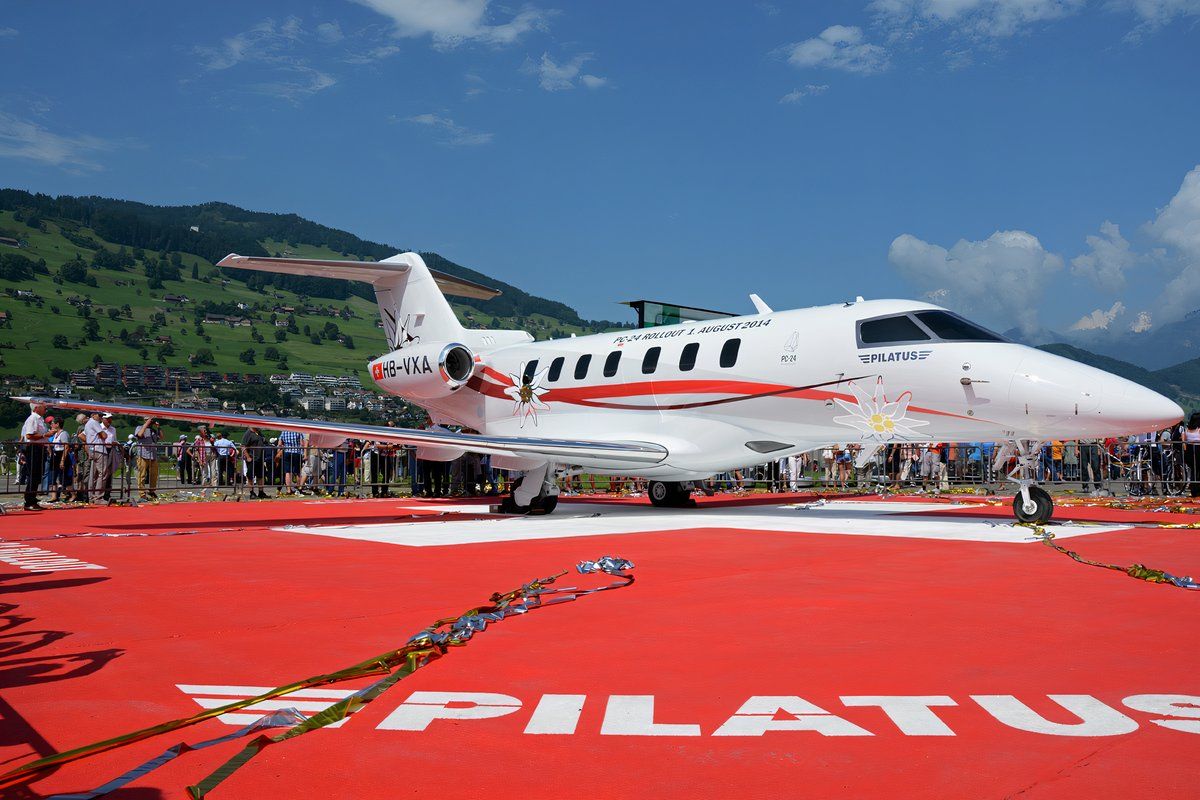Private jets are typically sold to wealthy individuals who spend their time in top cities for leisure or business purposes, or for corporations to shuttle top executives. Even smaller planes are often used either for business, or for a wealthy person’s pleasure. As such, the idea of a private jet on a dirt runway may sound like an oxymoron; why would a private jet owner fly to an airport with a dirt runway?
The Pilatus PC-24
is just that: a private jet with rough field capability. With a capacity for up to ten, a range of 2,000 nm (3,704 km), and a MTOW of 8.5T, this light business jet competes primarily with the Embraer Phenom 300 and the Cessna CitationJet series.
The standout feature of the PC-24, however, is that while other business jets stay on the pavement, the Pilatus is designed specifically to tackle terrain. In fact, the PC-24 is notable for being the first business jet to be certified for rough field operations.

Related
Gravel Kits: How Boeing 737s Could Land On Dirt Runways
Gravel kits are required when traveling to isolated towns or villages in places like Alaska and Northern Canada.
The Pilatus PC-12
The PIlatus PC-12, first delivered in 1994, has proven to be a very successful model for the Swiss manufacturer, with over 2,000 sales. However, some customers desired more capability. While the PC-12 is remarkably capable, the reality remains that it is a single-engine turboprop. As such, the type is limited in range, speed and altitude.
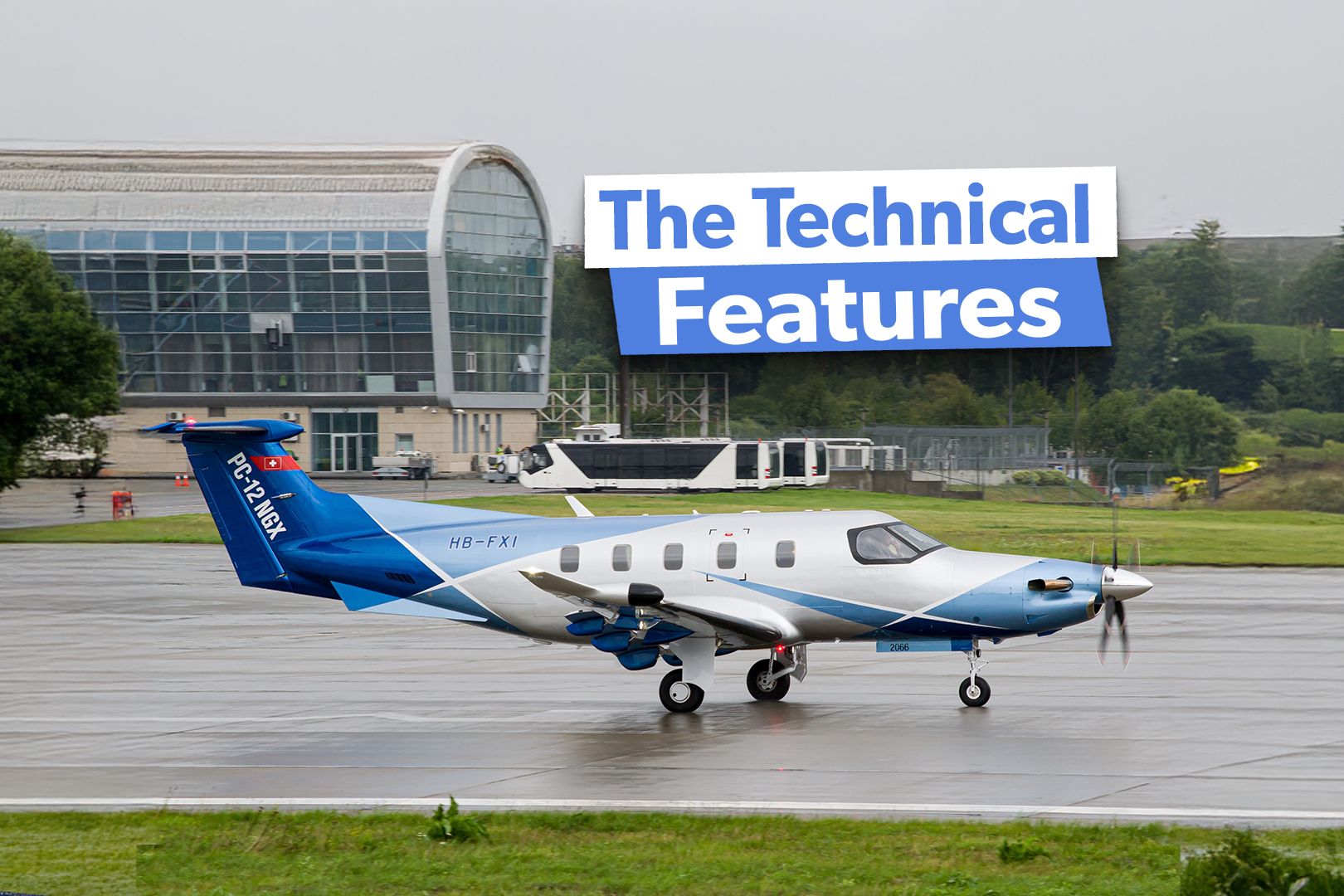
Related
The Technical Features That Make The Pilatus PC-12 So Competitive
The aircraft has some impressive capabilities.
The primary benefit of a PC-12 is its versatility. While most of its competitors are either cheaper or do something better than the PC-12, the Pilatus offers a perfect balance of various performance metrics and has exceptional rough field capability. The plane was sold in large numbers for both personal use and utility. As such, its no surprise that the operators who pushed the turboprop to its limits wanted an upgraded version.
Photo: Trevor Howard Jones I Shutterstock
Enter the Pilatus PC-24
The Pilatus PC-24 is a complementary aircraft to the PC-12. In order to satisfy the demands of customers, PIlatus gave the aircraft two Williams turbofan engines and a new design while retaining many of the unique features that made the PC-12 such a hit. The two aircraft aren’t even that different in size:
|
PC-12NG |
PC-24 |
|
|---|---|---|
|
Max. Capacity |
Nine |
Ten |
|
Length |
47 ft 3 in (14.4 m) |
55 ft 2 in (16.85 m) |
|
Wingspan |
53 ft 5 in (16.28 m) |
55 ft 9 in (17 m) |
|
Height |
14 ft (4.26 m) |
17 ft 4 in (5.4 m) |
The fundamental difference between the two, besides the powerplants, is the design of the fuselage and wing. Being optimized for high-speed, high-altitude cruising, the PC-24 features much better overall performance compared to the PC-12.
|
PC-12NG |
PC-24 |
|
|---|---|---|
|
MTOW |
10,450 lb (4,740 kg) |
18,700 lb (8,500 kg) |
|
Range |
1,845 nm (3,417 km) |
2,000 nm (3,704 km) |
|
Cruise speed |
285 kt |
440 kt |
|
Service ceiling |
30,000 ft |
45,000 ft |
The difference in length between the PC-12 and PC-24 is less than the difference between the CRJ900
and the Embraer E175
, two direct competitors.
When designing their first jet, however, Pilatus made sure to include what made the PC-12 stand out. The aircraft includes a similar over-sized cargo door, and the same rough field capability, a first for a jet-powered private plane.
The difficulty with jets on rough terrain
Rough field certification involves testing an aircraft on a wide variety of surfaces, such as grass, gravel, snow and sand. Developing an aircraft for use on these surfaces means that special design choices need to be made in order to ensure the plane is capable of operating there.
- Surfaces such as these tend to be soft, meaning that an aircraft needs to be able to land and taxi without sinking into the ground. More wheels to distribute the weight typically solves this problem.
- Landing on a rough runway can cause debris to fly up from the wheels and damage the aircraft. Structural reinforcements are key here.
- Such airfields tend to have very short runways, meaning that planes need to be capable of taking off and landing in very small distances.
Photo: Kevin Porter | Shutterstock
Jet engines typically present another challenge, in that foreign object debris (FOD) can be sucked into the engine and damage the internal components.
There have been military aircraft that have this capability (like the Boeing C-17) and conversion kits for older airliners (like those for the Boeing 737-200). In the business aviation world, however, it’s extremely uncommon. After all, in what circumstances would a private jet need to use such surfaces?
Who uses the Pilatus PC-24?
The Pilatus PC-24 entered service with Australia’s Royal Flying Doctor Service in 2019. These aircraft are configured as air ambulances, and its rough field certification allows it to fly into the many unpaved fields in Australia’s Outback. Complementing the Royal Flying Doctor Service’s fleet of propeller aircraft, the PC-24 halves flying time, an important consideration when attempting to save life.

Related
Medevac Flights: Everything You Need To Know
Learn more about these life-saving missions that are transporting critically ill patients swiftly to medical care every day.
Business jets have always been used as medevac aircraft, owing to their small size and flexibility. The PC-24 takes that flexibility even further with its ability to land on a variety of unpaved surfaces.
Besides medevac, the PC-24 has also been purchased by many governments around the world for various purposes, such as military or police. The capabilities of the aircraft make it the most versatile light jet on the market.
All the while, the PC-24 can function perfectly as a standard corporate jet. With a luxurious cabin and the ability to be flown by a single pilot, the PC-24 has proven popular for fleets, while owner-operators can enjoy the best interiors that Pilatus offers, and land on the occasional grass runway if they want.
How the Pilatus PC-24 achieves its capabilities
In order to create the PC-12’s bigger sibling, Pilatus had to make a number of design choices that would give the plane unparalleled capability. Pilatus calls the aircraft,
“the world’s first and only Super Versatile Jet,”
The name is because the aircraft combines the size and performance of a light business jet with the flexibility of a turboprop. In order to create the Super Versatile Jet, Pilatus made the design of the PC-24 rather unique:
- Unlike most other jets in its size class, the PC-24 has two wheels for its sets of main landing gear, and the tires are inflated to 70 psi.
- The main landing gear is reinforced and features a trailing-link design.
- The wing is mounted quite low and features a very small sweep angle, to improve low-speed handling, while also increasing ground clearance.
- Double-slotted flaps allow for shorter takeoffs and landings at lower speeds.
- The engines are mounted high enough to eliminate the risk of FOD.
These design characteristics are uncommon in other aircraft in order to save weight and reduce development costs. For the PC-24, however, it was necessary in order to provide the versatility that is the selling point of the jet.
Other private jets that can land on rough surfaces
In addition to turboprops, some small jets can and occasionally do land on difficult terrain with modifications, usually grass. What separates the PC-24 is that it was designed from the ground up to operate in such conditions with no modifications.

Related
Gravel Kits: How Boeing 737s Could Land On Dirt Runways
Gravel kits are required when traveling to isolated towns or villages in places like Alaska and Northern Canada.
The Dassault Falcon
The two-engined Dassault Falcon 20 and the three-engined Dassault Falcon 50 were originally designed to fly solely on paved runways, but conversion kits were offered later in these aircraft’s lives that allowed them to operate out of difficult surfaces.
Where the PC-24 stands today
Over 200 Pilatus PC-24s have been built and delivered. The plane is proving to be excellent out in the field, and customers worldwide are finding a variety of uses for this jet.
The aircraft is being flown in ways that aren’t typically associated with business jets by the public, but business jets have always been used in a wide variety of roles. Their smaller size, superior performance and lower costs have always made them more flexible than using an airliner. The PC-24 takes the flexibility one step forward by adding rough field capability.
Its unlikely that there will be many jets like the PC-24 designed in the future. Again, the two ideas seem to contradict each other, as such capability would simply add weight, cost and complexity. However, Pilatus differentiates itself based on this flexibility, and has found a large customer base for the Super Versatile Jet, just like it did with the PC-12. While the idea may make little sense at first, for the Pilatus PC-24, it’s the point.


